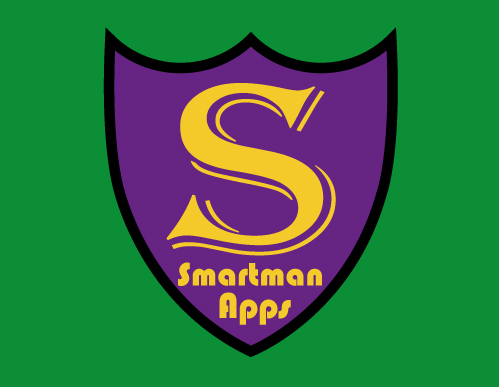it seems ridiculous that we have to embed an entire browser, meant for internet web browsing, just to create a cross-platform UI with moderate ease.
Why are native or semi-native UI frameworks lagging so far behind? am I wrong in thinking this? are there easier, declarative frameworks for creating semi-native UIs on desktop that don't look like windows 1998?
Ha! I'm partially looking at this issue in my bachelor's thesis.
It's not at all necessary to embed a browser, but it's really easy to transfer your web app to a "near native" experience with stuff like electron, ionic, cordova, react native or whatever other web stuff is out there. The issue is mostly that native APIs are complicated and relying on web views or just providing your own "browser" is a relatively easy approach.
Stuff like Flutter, Xamarin or .NET MAUI compile depending on the platform to native or are interpreted by a runtime. There's a study I use that compares Flutter to React Native, native Java and Ionic on Android and finds that unsurprisingly the native implementation is best, but is closely followed by Flutter (with a few hiccups), with the remainder being significantly slower.
The thing is. I don't think these compiled frameworks lag behind in any way. But when you have a dev team, that's competent in web development, you won't make them learn C#, Xaml, Dart or C++, just to get native API access - you'll just let a framework handle that for you because it's cheaper and easier.
Edit: To add some further reading. This paper and this one explore the different approaches out there and suggest which one might be "the best". I don't feel like they're good papers, but there's almost no other write up of cross-platform dev approaches out there.
Edit2: I also believe that the approach "we are web devs that want access to native APIs" may be turned around in the future, since Flutter and now also .NET offer ways to deploy cross-platforn apps as web apps. I'll get back to writing the thesis now and stop editing.
I remember thinking that Qt seemed like a really good approach that should be more widely adopted...until I actually had to use it.
Not that it's terrible; it's really not. But C++ is just not at all a good language for <s>anything</s> UI stuff.
This is because each desktop operating system using a different graphics rendering engine—Quartz on macOS and X/Wayland on Linux, for example. In order to write an application that works on all major operating systems, you either need to use a graphics library that has already done the heavy lifting of calling the native frameworks under the hood or you have to do it yourself. Or you can use a web-based graphics library that has also already done that heavy lifting, with the added advantage that you can use languages like HTML, CSS, and Javascript to easily create visual elements. This is attractive when the alternatives like Qt are notoriously difficult to deploy and force you to use C/C++.
Depends on your language.
https://flutter.dev/
https://fyne.io/
https://slint.dev/
https://github.com/ocornut/imgui
You mean like qt/qml? Due mind that even with those ui toolkits you will need to ship 'some' library. In case of QT it is not minimal at all. GTK can be more minimal but it still is significant.
Also there is tauri. Which doesn't ship a browser, but uses the platform native we view and is compiled while still having an amazing dev experience.
I don't understand exactly how this is different. Is "WebView" not still very similar to a browser?
It doesn't embed Chromium, it uses the native webview that already exists on the system. The average app I make using Tauri is less than 15MB, and being Rust on the backend you can go as low level as you like. The Tauri API provides access in your front end code to all the native APIs you can think of.
https://slint.dev/ has gotten there, IMO. They're working on a python binding and even to compile to android apps.
The real question is how we got any portable solution to this problem in the first place.
To me problems are fundamentally economic and political, not technical. For example, the unique circumstances that led to a portable web standard involved multiple major interventions against Microsoft by antitrust regulators (in 2001, 2006, 2009, 2013, etc). The other tech giants were happy to go along with this as a way to break microsoft's monopoly. Very soon after, Google and Apple put the walls straight back up with mobile apps.
If you go back before HTML, OS research was progressing swiftly towards portable, high-level networked GUI technology via stuff like smalltalk. Unfortunately all of the money was mysteriously pulled from those research groups after Apple and Microsoft stole all the smalltalk research and turned it into a crude walled garden of GUI apps, then started printing money faster than the US Mint.
Whenever you see progress towards portable solutions, such as Xamarin and open source C#, React Native, or even Flutter, it is usually being funded by a company that lost a platform war and is now scrambling to build some awkward metaplatform on top of everyone else's stuff. It never really works.
One exception is webassembly, which was basically forced into existence against everyone's will by some ingenious troublemakers at Mozilla. That's a whole other story though!
It depends on just how "cross-platform" you want to make it. If you came up with another standards-based UI framework that had the same cross-platform penetration of web browsers, then you'll have effectively reinvented the browser. For everything else, you can basically pick a maximum of two: cross-platform, native, and easy.
Check out kotlin compose multiplatform. Takes the Android declarative jetpack compose UI framework and makes it run cross platform. You get most of the modern UX conveniences from Android, can reuse libraries etc. Works with either JVM or compiling to native code too.
There's https://redbean.dev/, but it's not quite what you mean.
It runs on the browser with a local host reference to a lua server with access to c libs.
I'm not sure what you mean about embedding a browser - do you mean writing your UI in XAML? If so I wrote a whole blog post suitable for beginners and up on how to write a MAUI UI using only C# Creating MAUI UI's in C#




